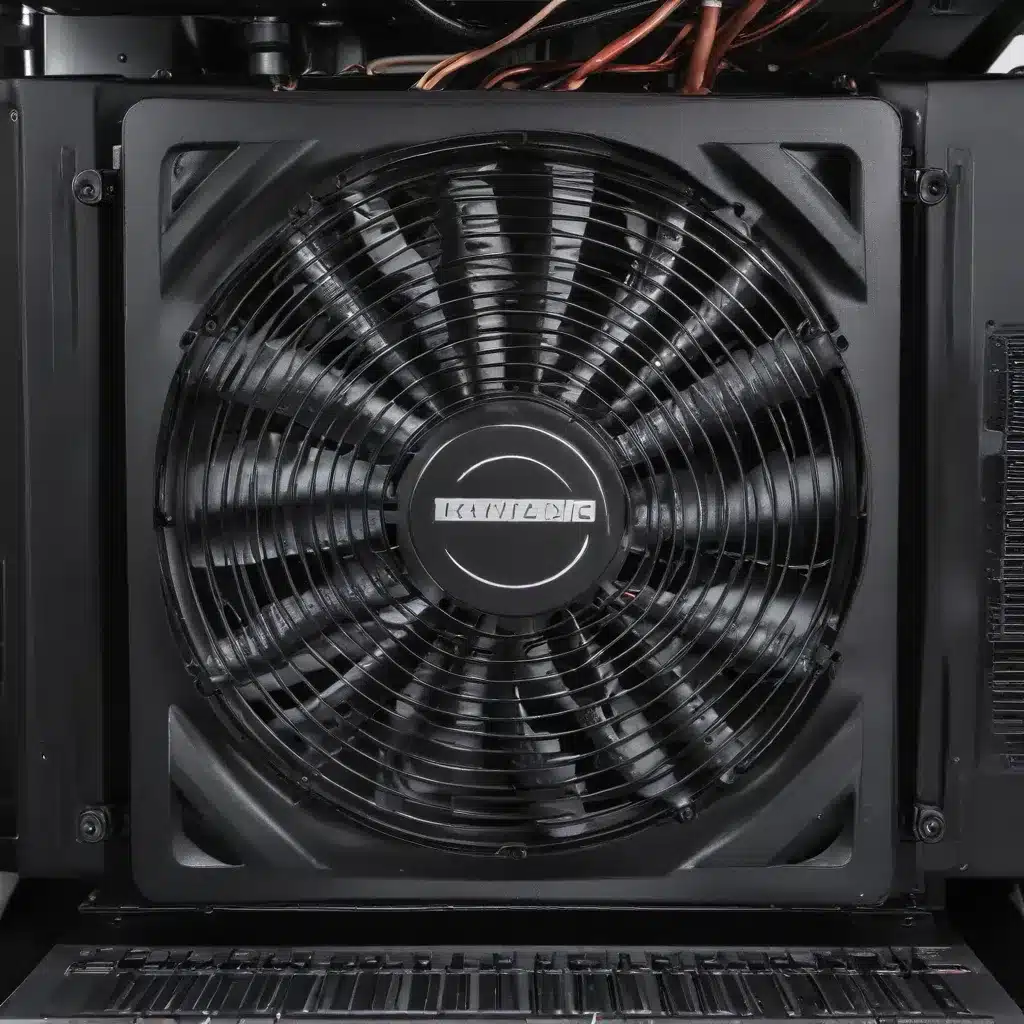
Upgrading and Optimizing Laptop Cooling Solutions
Keeping your laptop cool and running at its best can be a challenge, especially during intense workloads or in warm environments. Proper cooling is essential to prevent performance throttling, system crashes, and even hardware damage. In this comprehensive guide, we’ll explore a range of hardware components, cooling optimization techniques, upgrade strategies, and laptop cooling accessories to help you get the most out of your machine.
Hardware Components
The foundation of an effective laptop cooling system lies in its core hardware components. Let’s take a closer look at the key elements that contribute to efficient heat dissipation.
Heatsinks
Heatsinks are the unsung heroes of laptop cooling. These metallic components are designed to absorb and dissipate heat away from critical components, such as the CPU and GPU. Two common materials used in laptop heatsinks are:
Copper Heatsinks: Copper is an excellent thermal conductor, making it highly effective at drawing heat away from components. Copper heatsinks are often found in high-performance laptops or as aftermarket upgrades.
Aluminum Heatsinks: While not as thermally efficient as copper, aluminum heatsinks are more cost-effective and lightweight, making them a popular choice for many laptop manufacturers.
Fans
Fans play a crucial role in actively moving hot air away from the laptop’s internals. There are two main types of fans used in laptops:
Case Fans: These fans are responsible for drawing in cool air from the laptop’s vents and expelling hot air out of the system.
CPU Fans: Directly mounted on the CPU heatsink, these fans provide targeted cooling to the processor, the primary heat-generating component in a laptop.
Thermal Paste
Thermal paste, also known as thermal interface material (TIM), acts as a heat-conducting bridge between the CPU/GPU and their respective heatsinks. Applying a high-quality thermal paste can significantly improve heat transfer and cooling efficiency.
Cooling Optimization Techniques
Beyond the hardware components, there are several techniques you can employ to optimize your laptop’s cooling performance.
Airflow Management
Proper airflow management is crucial for effective cooling. This involves considering the placement and orientation of the laptop’s vents and fans.
Vent Placement: Ensure that the laptop’s air intake and exhaust vents are not obstructed by surfaces, cables, or other objects. This allows for unimpeded airflow.
Fan Orientation: Verify that the laptop’s fans are configured to draw in cool air and expel hot air efficiently. Incorrect fan orientation can hinder cooling performance.
Thermal Throttling
Thermal throttling is a built-in safeguard that automatically reduces the CPU and GPU’s performance when temperatures exceed a certain threshold. This helps prevent damage to the components but can lead to noticeable performance drops.
CPU Throttling: Monitor your CPU’s temperature and consider adjusting the throttling thresholds or implementing power management profiles to maintain optimal performance.
GPU Throttling: Similar to CPU throttling, monitor your GPU’s temperature and explore ways to manage thermal throttling, such as adjusting graphics settings or using GPU-specific cooling solutions.
Overclocking Considerations
While overclocking can provide a performance boost, it also generates additional heat. If you plan to overclock your laptop’s CPU or GPU, ensure that the cooling system can handle the increased thermal load.
CPU Overclocking: Carefully monitor CPU temperatures and be prepared to revert any overclock settings if the cooling system becomes overwhelmed.
GPU Overclocking: Approach GPU overclocking with caution, as the additional heat generated can quickly push the laptop’s cooling capabilities to their limits.
Upgrade Strategies
If your laptop’s stock cooling solution is not providing adequate performance, there are several upgrade options to consider.
Heatsink Replacement
Replacing the laptop’s original heatsink with a higher-performing aftermarket solution can significantly improve cooling capabilities. Look for heatsinks made of premium materials, such as copper, and ensure compatibility with your specific laptop model.
Fan Upgrades
Upgrading the laptop’s case and CPU fans can also enhance cooling efficiency. Opt for high-performance fans that move more air at lower noise levels.
High-Performance Fans: Identify and install fans with higher CFM (cubic feet per minute) ratings to increase airflow.
Dual-Fan Setups: Some laptops offer the ability to install a secondary CPU fan for even more targeted cooling.
Thermal Paste Reapplication
Periodically reapplying a fresh layer of high-quality thermal paste between the CPU/GPU and their respective heatsinks can help maintain optimal heat transfer. This is a relatively simple task that can yield noticeable cooling improvements.
Laptop Cooling Accessories
In addition to internal hardware upgrades, there are various cooling accessories designed to enhance your laptop’s thermal performance.
Laptop Cooling Pads
Laptop cooling pads are external devices that provide additional cooling for your laptop. These come in two main varieties:
Passive Cooling Pads: These pads use elevated platforms and vents to improve airflow around the laptop’s underside, without the need for additional fans.
Active Cooling Pads: Featuring built-in fans, these pads actively draw in cool air and direct it towards the laptop’s vents, providing more effective cooling.
External GPU Enclosures
For laptops with dedicated graphics cards, an external GPU (eGPU) enclosure can offload the GPU’s processing workload and heat generation to a separate, dedicated cooling system.
Liquid Cooling Systems
While less common in laptops, some enthusiasts have explored the use of liquid cooling systems to achieve even more impressive cooling performance. These custom setups involve replacing the laptop’s stock cooling components with a closed-loop liquid cooling system.
Remember, before attempting any hardware modifications or upgrades, always refer to your laptop’s manufacturer guidelines and safety instructions. Improper handling or installation can potentially damage your device.
By understanding the key cooling components, optimizing airflow and thermal management, and exploring upgrade options, you can keep your laptop running at its best, even during the most demanding tasks. For personalized assistance or if you encounter any issues, feel free to reach out to the IT Fix team at https://itfix.org.uk/computer-repair/.












